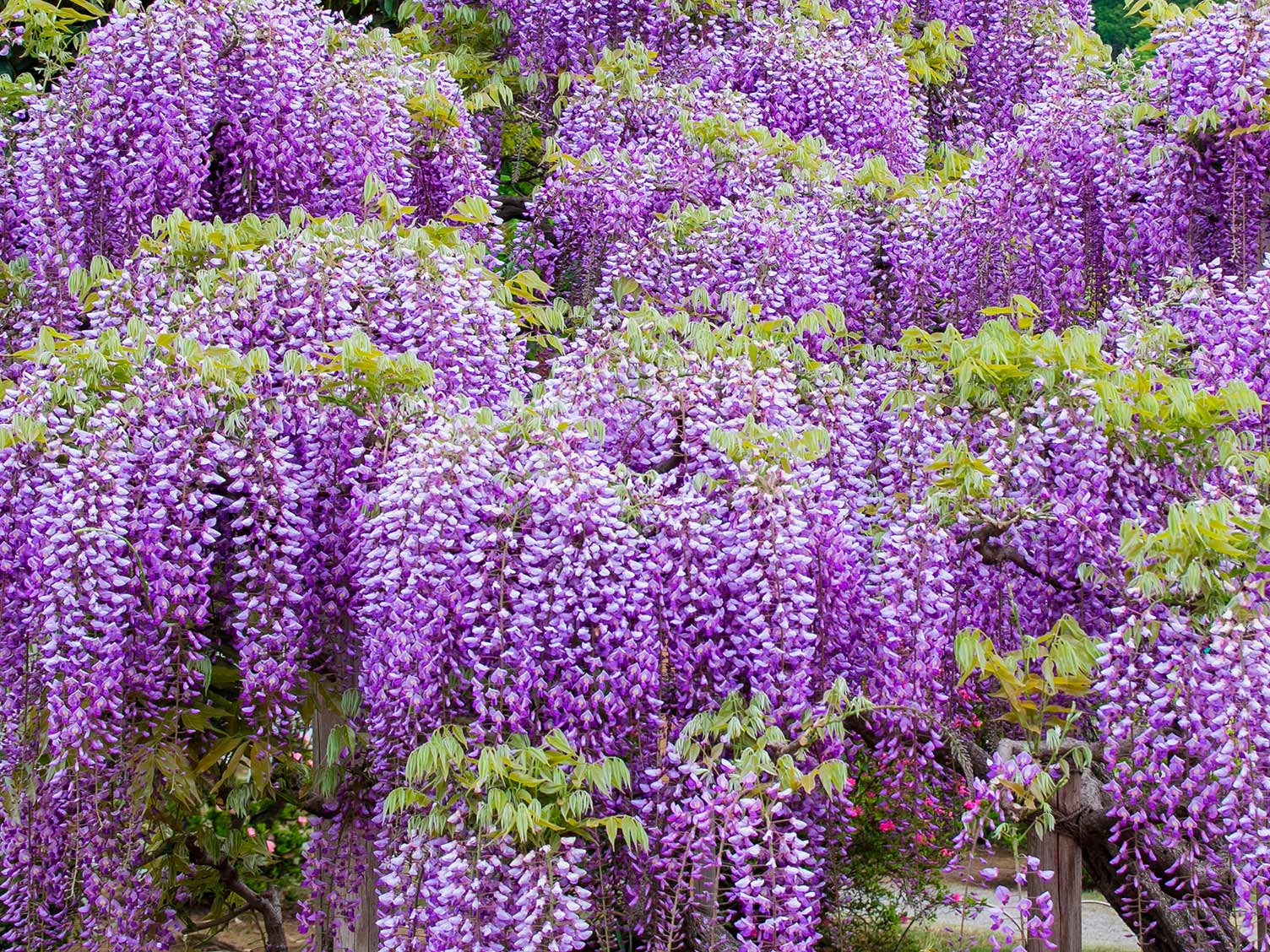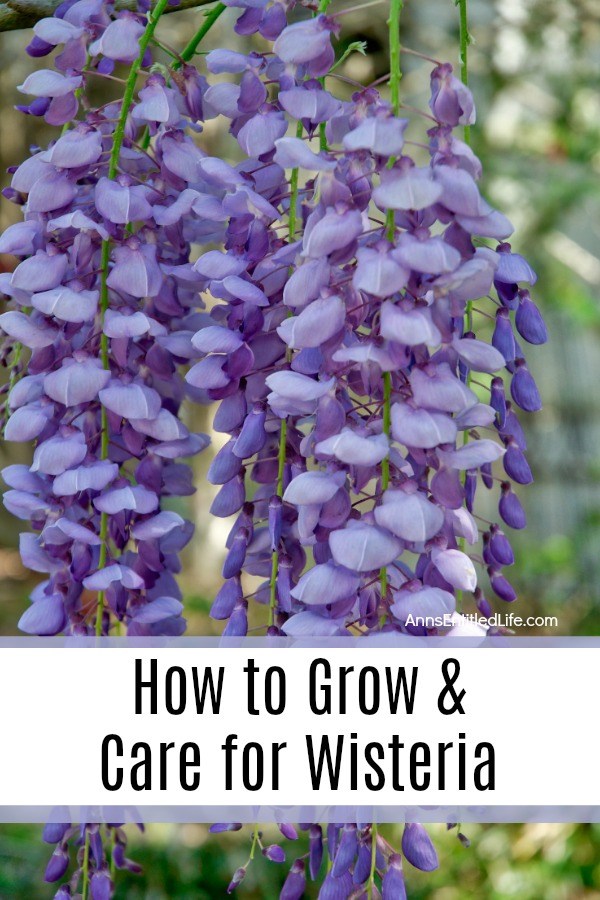What Makes Wisteria a Fast-Growing Vine?
Wisteria, a flowering vine renowned for its breathtaking beauty, has gained immense popularity in gardens worldwide. Its rapid growth rate is one of the primary reasons for its widespread adoption. But what makes wisteria grow so fast? The answer lies in its unique characteristics and adaptability to various environments. Wisteria’s ability to thrive in a range of climates, from temperate to subtropical regions, contributes significantly to its fast growth rate. Additionally, its tolerance to different soil types, including acidic, alkaline, and neutral soils, makes it an ideal choice for gardeners with varying soil conditions. Pruning also plays a crucial role in promoting wisteria’s growth, as it encourages the vine to focus its energy on producing new shoots and flowers. By understanding these factors, gardeners can create an optimal environment that fosters healthy growth and encourages their wisteria to reach its full potential. In fact, with proper care and conditions, wisteria can grow up to 10 feet in a single growing season, making it an ideal choice for gardeners looking to add a touch of elegance to their outdoor spaces. So, how fast does wisteria grow? The answer is simple: with the right conditions and care, wisteria can grow incredibly fast, making it a great addition to any garden.
Optimal Conditions for Wisteria Growth
To unlock the full potential of wisteria’s rapid growth, it’s essential to provide the ideal conditions for its development. Wisteria thrives in full sun to partial shade, with a minimum of six hours of direct sunlight per day. In terms of temperature, wisteria prefers a moderate climate with average temperatures ranging from 65°F to 75°F (18°C to 24°C). Soil requirements are also crucial, as wisteria grows best in well-draining, fertile soil with a pH between 6.0 and 7.0. To create an environment that fosters healthy growth, gardeners can take several steps. Firstly, choose a location that receives the right amount of sunlight and has good air circulation. Secondly, prepare the soil by adding organic matter such as compost or manure to improve its fertility and drainage. Finally, water wisteria regularly, but avoid overwatering, which can lead to root rot and other problems. By providing the optimal conditions for wisteria growth, gardeners can encourage their vines to grow rapidly and produce an abundance of beautiful flowers.
How to Support Wisteria’s Aggressive Growth
Wisteria’s rapid growth can be both a blessing and a curse. While it’s exciting to see the vine thrive, its aggressive growth can quickly get out of control if not properly supported. Providing structural support is crucial to keep wisteria’s vigorous growth in check and encourage it to grow upwards and outwards. One of the most effective ways to support wisteria is by using trellises or arbors. These structures provide a framework for the vine to climb, keeping it upright and promoting a more compact growth habit. When choosing a trellis or arbor, consider the mature size of the wisteria plant and select a structure that can accommodate its growth. Pruning is also essential in supporting wisteria’s growth. Regular pruning helps to control the vine’s size, promotes healthy growth, and encourages blooming. By pruning wisteria regularly, gardeners can direct its energy towards producing more flowers and foliage, rather than just foliage. Additionally, pruning helps to remove any dead or damaged wood, reducing the risk of disease and pests. By providing the right support and pruning regularly, gardeners can enjoy the beauty of wisteria’s rapid growth while keeping it under control. Remember, with proper support and care, wisteria can grow up to 10 feet in a single growing season, making it a stunning addition to any garden. So, how fast does wisteria grow? With the right support and care, it can grow incredibly fast, making it a great choice for gardeners looking to add a touch of elegance to their outdoor spaces.
The Role of Fertilization in Wisteria’s Growth Rate
Fertilization plays a crucial role in promoting wisteria’s rapid growth and encouraging blooming. When it comes to fertilizing wisteria, it’s essential to choose a balanced fertilizer that provides the necessary nutrients for healthy growth. A fertilizer with a ratio of 10-10-10 (nitrogen-phosphorus-potassium) is ideal, as it provides equal amounts of nitrogen, phosphorus, and potassium. Nitrogen promotes leaf growth, phosphorus encourages root development, and potassium helps with overall plant health. When to fertilize is also important. Wisteria benefits from regular fertilization, with applications every 4-6 weeks during the growing season. Soil testing is also recommended to determine the soil’s pH level and nutrient content. This information can help gardeners adjust their fertilization schedule and choose the right fertilizer for their wisteria. By fertilizing wisteria regularly, gardeners can expect to see rapid growth, with the vine growing up to 10 feet in a single growing season. Additionally, fertilization can encourage blooming, with wisteria producing more flowers and foliage. Remember, how fast does wisteria grow? With proper fertilization, it can grow incredibly fast, making it a stunning addition to any garden. By providing the right nutrients, gardeners can support wisteria’s aggressive growth and enjoy its beauty for years to come.
Pruning for Maximum Growth and Blooms
Pruning is a crucial aspect of wisteria care, as it promotes healthy growth, encourages blooming, and helps maintain the vine’s overall shape. Regular pruning also helps to control wisteria’s aggressive growth, keeping it from becoming too leggy or invasive. To prune wisteria effectively, gardeners should follow a few simple steps. First, remove any dead, diseased, or damaged wood from the vine, as this can help prevent the spread of disease and encourage healthy growth. Next, cut back the vine’s long stems to encourage branching and promote a fuller growth habit. Finally, thin out the vine’s interior to allow more sunlight to reach the remaining stems and promote blooming. Pruning should be done in late winter or early spring, before new growth begins. By pruning wisteria regularly, gardeners can expect to see more blooms and a fuller, healthier vine. Remember, how fast does wisteria grow? With regular pruning, it can grow incredibly fast, making it a stunning addition to any garden. By providing the right care and attention, gardeners can enjoy wisteria’s beauty for years to come. Additionally, pruning can help wisteria grow up to 10 feet in a single growing season, making it a great choice for gardeners looking to add a touch of elegance to their outdoor spaces.
Common Challenges and Solutions for Wisteria Growth
While wisteria is a relatively low-maintenance vine, it’s not immune to common challenges that can affect its growth. Pests, diseases, and nutrient deficiencies are just a few of the issues that can impact wisteria’s health and growth rate. For example, aphids, whiteflies, and spider mites can all infest wisteria, causing damage to the leaves and stems. To combat these pests, gardeners can use insecticidal soap or neem oil to control infestations. Fungal diseases, such as root rot and leaf spot, can also affect wisteria. To prevent these diseases, gardeners should ensure good air circulation around the vine and avoid overwatering. Nutrient deficiencies, particularly a lack of iron or magnesium, can also impact wisteria’s growth. Soil testing can help identify these deficiencies, and gardeners can use fertilizers specifically formulated to address these issues. By being aware of these common challenges and taking steps to prevent them, gardeners can help ensure healthy growth and maximize wisteria’s blooming potential. Remember, how fast does wisteria grow? With proper care and attention, it can grow incredibly fast, making it a stunning addition to any garden. By providing the right care and attention, gardeners can enjoy wisteria’s beauty for years to come.
How to Train Wisteria for Maximum Coverage
Wisteria is a versatile vine that can be trained to cover large areas, making it an ideal choice for gardeners looking to add a touch of elegance to their outdoor spaces. To train wisteria for maximum coverage, gardeners should start by selecting a sturdy trellis or arbor that can support the vine’s vigorous growth. Next, plant the wisteria near the base of the trellis or arbor, and gently twine the stems around the structure. As the vine grows, continue to train it by twining the stems around the trellis or arbor, and pruning any stray shoots that grow outside of the desired area. With regular pruning and training, wisteria can be used to cover walls, pergolas, and trellises, creating a beautiful, flowering display. Additionally, wisteria can be used as a groundcover or for creating a living fence, making it a versatile and attractive addition to any garden. By training wisteria to cover large areas, gardeners can enjoy its beauty and fragrance for years to come. Remember, how fast does wisteria grow? With proper training and care, it can grow incredibly fast, making it a stunning addition to any garden.
Wisteria Growth Expectations: What to Expect in the First Year
When planting wisteria, it’s essential to have realistic expectations for its growth in the first year. With proper care and conditions, wisteria can grow rapidly, but it’s crucial to understand what to expect in terms of growth rate, blooming frequency, and maintenance requirements. In the first year, wisteria can grow up to 10 feet in length, with some varieties growing even faster. However, it’s essential to provide regular pruning to control the vine’s growth and encourage blooming. Wisteria typically blooms in the spring and summer months, with the first year’s blooms often being less profuse than in subsequent years. To ensure healthy growth, gardeners should expect to provide regular watering, fertilization, and pruning. By understanding what to expect in the first year, gardeners can better care for their wisteria and enjoy its beauty for years to come. Remember, how fast does wisteria grow? With proper care, it can grow incredibly fast, making it a stunning addition to any garden. By setting realistic expectations and providing the right care, gardeners can enjoy wisteria’s rapid growth and beautiful blooms.




